Alfalfa weevil is no longer just a regional nuisance—it’s a widespread, yield-crushing pest that is rapidly evolving to resist traditional insecticides. In a recent Hay Kings Podcast episode, host Jon Paul Driver sat down with Dr. Erica Rodbell, forage research agronomist and entomologist at Forage Genetics International, and longtime industry advocate Jeffrey “Alfalfa” Jackson. Their conversation delivered practical, science-backed strategies that farmers can implement to protect their hay crops and budgets.
1. Scouting: The Foundation of All Pest Management
Dr. Rodbell emphasized this repeatedly: “Scout your alfalfa fields.” Scouting is the first, best step to avoid costly yield losses and ineffective treatments.
When to Scout by Region:
-
Southern AZ/CA: Late January – Mid-February
-
Southern WA / Umatilla County OR: Early – Mid-May
-
Wyoming: May
-
SE Montana: Early June
-
Western Montana (Lake County): Mid-June
Scouting Methods:
-
Sweep Net: Economic threshold ≈ 20 larvae per sweep
-
Shake Bucket: ≈ 3 larvae per stem
-
Visual Estimates: Can be risky; use trained judgment
💡 Pro Tip: Once temperatures reach 75°F and climbing, larvae emerge. Alfalfa weevils don’t thrive in extreme heat—so scouting windows can be tight and vary year to year.
2. Why Growing Degree Days Aren’t Enough
Though long used to estimate pest activity, growing degree day models have failed to keep pace with real-world variability.
“Use them as a roadmap—not a guarantee,” Dr. Rodbell advised. Weather, geography, and local field conditions matter more. Trust your boots-on-the-ground observations over models alone.
3. Economic Thresholds Must Be Dynamic
Economic thresholds aren't fixed—they change with:
-
Value of the crop (e.g., dairy-quality vs. cow-calf hay)
-
Cost of application
-
Cost and availability of insecticides
Dr. Rodbell referenced a 2021 Arizona study suggesting a threshold as low as 5-6 larvae per sweep in high-value systems. If hay prices are strong, act early.
4. Resistance: Know It, Spot It, Rotate From It
Pyrethroid resistance is now confirmed in several western states. If you’re spraying the same product three times with no control, you likely have it.
Pyrethroids include:
-
Lambda-cyhalothrin (Warrior II)
-
Zeta-cypermethrin (Mustang Maxx)
-
Beta-cyfluthrin (Baythroid)
Action Steps:
-
Switch to oxcarbazone (Steward), a Group 22A insecticide
-
Avoid back-to-back use of the same mode of action
-
Document everything (product, field, results)
✅ Pro Tip: Dr. Rodbell’s research shows resistance can decline after 4–5 years of rotation away from pyrethroids.
5. Tank Mixing: Proceed With Caution
Mixing multiple insecticides might feel like a good insurance policy—but it complicates rotation and can impact beneficials.
“I’m an insecticide purist,” said Dr. Rodbell. “Rotate one group at a time, and know what you’re putting down.”
6. Don’t Forget Beneficial Insects
Misidentifying good bugs (like ladybug larvae) as pests can lead to unnecessary spraying. Scouting also prevents this.
🧠 If it’s purple with orange dots crawling on your cutterbar—it’s not a pest. It’s eating your aphids.
7. Beyond Spraying: Mechanical & Biological Control
Early Cutting:
-
Reduces larval numbers
-
Sacrifices some yield, but increases quality
-
Works best when followed by fast drying and aggressive raking
Grazing:
-
Cows trample stems and eggs
-
Reduces overwintering habitat
-
Works well in fields planted with traffic-tolerant alfalfa
Crop Rotation & Residue Management:
-
Avoid back-to-back alfalfa fields if possible
-
Remove residue in fall or cut late to eliminate egg-laying habitat
8. Your Neighbors Matter
Pest resistance is not just your problem. If you’re rotating products and your neighbor isn’t, the migrating weevils can reintroduce resistance into your clean fields.
“This is a community problem,” Rodbell stressed. “Weevils fly.”
9. Use the Traits You Paid For
-
HarvXtra® alfalfa allows for later harvest without losing quality—especially helpful when waiting for spray pre-harvest intervals.
-
Know your fall dormancy ratings—they help guide quality vs. yield tradeoffs.
Conclusion
Alfalfa weevil management isn’t about having all the answers—it’s about building a better playbook. Scout often, document thoroughly, rotate chemistries wisely, and embrace integrated strategies. And perhaps most importantly, work together as a community. Resistance doesn’t respect fence lines.
🎙️ Hear the full episode on wherever you get your podcasts or on youtube or at Hay-Kings.com
